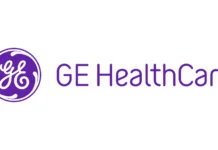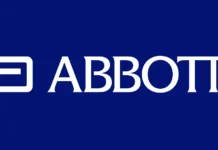Patient Pamela Louderback had been experiencing dizzy spells for months and arrived at St. Elizabeth Medical Center's emergency room (ER) after blacking out one morning at work. Unbeknownst to her and her doctors, she was on the verge of suffering a stroke. Standard medical treatment would have included a battery of tests to diagnose her condition over multiple days — a timetable that can prove fatal or debilitating for patients on the verge of stroke.
Fortunately for Louderback, St. Elizabeth used the world's first dynamic volume CT system, the Aquilion® ONE, to diagnose her condition within an hour and prevent a stroke from occurring at all. The system is capable of using one X-ray rotation to image an entire organ and show organ function over time, Toshiba America Medical Systems, Inc.'s Aquilion ONE is ideally suited for detecting neurovascular conditions quickly. It uses 320 ultra-high resolution detector rows to capture up to 16 cm of coverage, enough to image the entire brain or heart and show organ movement.
St. Elizabeth physicians used the Aquilion ONE to detect that the patient's right carotid artery was 90 percent occluded, which significantly reduced blood flow to the brain. By diagnosing this condition within the hour, physicians immediately planned stent treatment to open the artery passage, preventing a stroke.
"Toshiba's Aquilion ONE allowed us to accurately diagnose the patient quickly, dramatically improving her quality of life," explained Dr. Jeff Dardinger, director of imaging, Vascular Institute, St. Elizabeth Medical Center, who interpreted Louderback's images. "Without dynamic volume CT, the patient would have undergone a series of tests for two-to-four days, at a minimum, to uncover the occlusion. Being able to diagnose the patient within an hour allowed us to plan treatment immediately and prevent a stroke from occurring."
"I truly believe this system saved my life," explained Louderback. "I had several exams over the past few months, none of which could detect why I was having dizzy spells. It wasn't until I was imaged in the ER using the Aquilion ONE could a definitive answer be found."
Introduced in November 2007, dynamic volume CT scans an entire organ in a single pass and produces 4D videos that show an organ's structure, its movement and blood flow. In comparison, a 64-slice, 128-slice or 256-slice CT scan can only capture a portion of an organ in a single pass, requiring physicians to "stitch together" multiple scans of an organ to get a full image. The new technology helps reduce multiple exposures to radiation and exam time.
Designed for today's healthcare environment, the Aquilion ONE reduces overall healthcare costs and streamlines diagnosis by replacing several tests with a single comprehensive exam. The Aquilion ONE's single exam helps reduce unnecessary testing, as well as the accompanying accumulative radiation and contrast dose.
"The Aquilion ONE can dramatically improve patient care by providing a fast, comprehensive exam for patients suffering from life-threatening conditions, like stroke and heart attack, while helping to lower healthcare cost," explained Doug Ryan, senior director, CT Business Unit, Toshiba. "St. Elizabeth Medical Center is an excellent example of where the Aquilion ONE enabled physicians to diagnose and treat a patient before a serious stroke occurred."
About Toshiba's Aquilion CT Product Line Recognition
The Aquilion® ONE, the world's first dynamic volume CT, utilizes 320 ultra-high resolution detector rows to image an entire organ in a single gantry rotation and shows dynamic function like blood flow. Since its introduction in November 2007, the Aquilion ONE has been named Popular Science magazine's "Best of What's New 2008 — Personal Health Category," rt Image's 2008 Most Valuable Product (MVP), Frost & Sullivan's Global CT Systems Product Differentiation Innovation Award 2007 and AuntMinnie.com's "Minnies 2008 — Best New Radiology Device."
About St. Elizabeth Medical Center
Founded in 1861, St. Elizabeth Medical Center has locations in Covington, Edgewood, Williamstown and throughout Northern Kentucky. St. Elizabeth was the first Greater Cincinnati/Northern Kentucky hospital to achieve Magnet™ status, the internationally recognized gold standard for nursing excellence. St. Elizabeth is one of America's 50 Best Hospitals, placing it in the top 1 percent in the nation for quality of care in a seven year study by HealthGrades. St. Elizabeth is also ranked as a Top 100 Hospital by Thomson and among America's Best Hospitals for Respiratory Care by U.S News & World Report. The medical center has also been nationally recognized for heart, stroke, cancer, orthopedics and neurology and won the designation as Greater Cincinnati's Best Place to Work in the large company category three years in a competition by the Cincinnati Business Courier. Sponsored by the Diocese of Covington, St. Elizabeth fulfills a healing mission, providing over $42 million in uncompensated care and benefits to the community in 2007. In October of 2008, St .Elizabeth completed a merger with the St. Luke Hospitals and are now working together to enhance health services to the Greater Cincinnati area.
About Toshiba
With headquarters in Tustin, Calif., Toshiba America Medical Systems markets, sells, distributes and services diagnostic imaging systems, and coordinates clinical diagnostic imaging research for all modalities in the United States. Toshiba Medical Systems Corp., an independent group company of Toshiba Corp., is a global leading provider of diagnostic medical imaging systems and comprehensive medical solutions, such as CT, Cath & EP Labs, X-ray, Ultrasound, MRI and information systems. Toshiba Corp. is a leader in information and communications systems, electronic components, consumer products, and power systems. Toshiba has approximately 198,000 employees worldwide and annual sales of $77 billion. For more information, visit www.medical.toshiba.com .

















